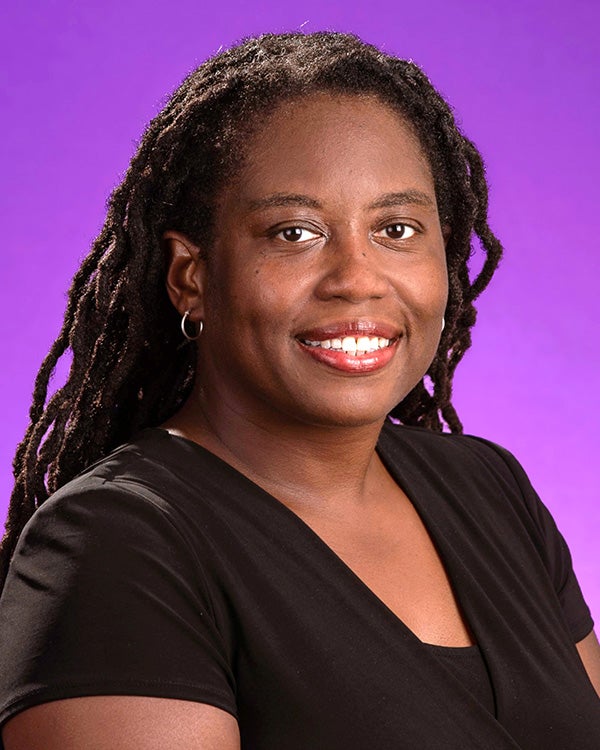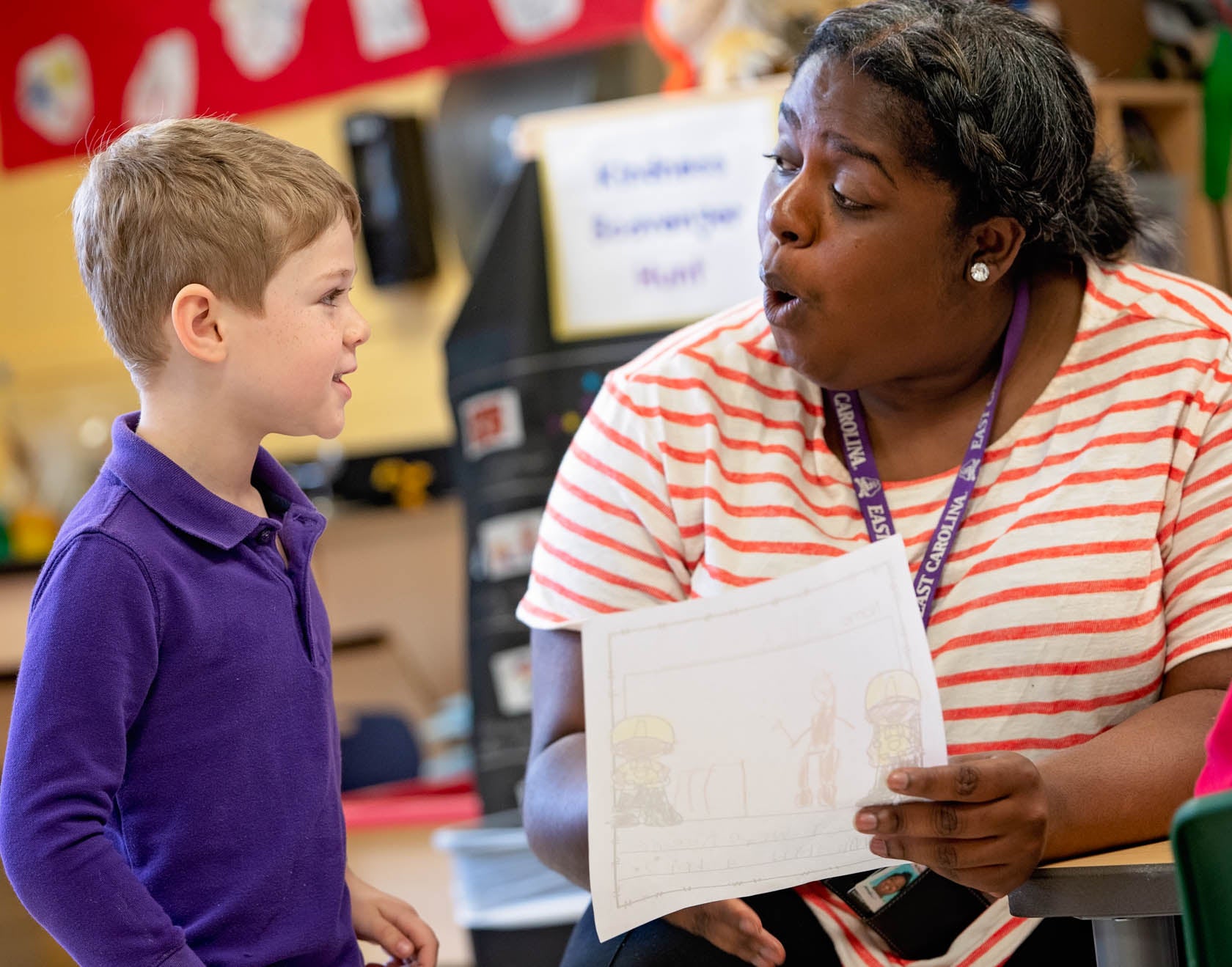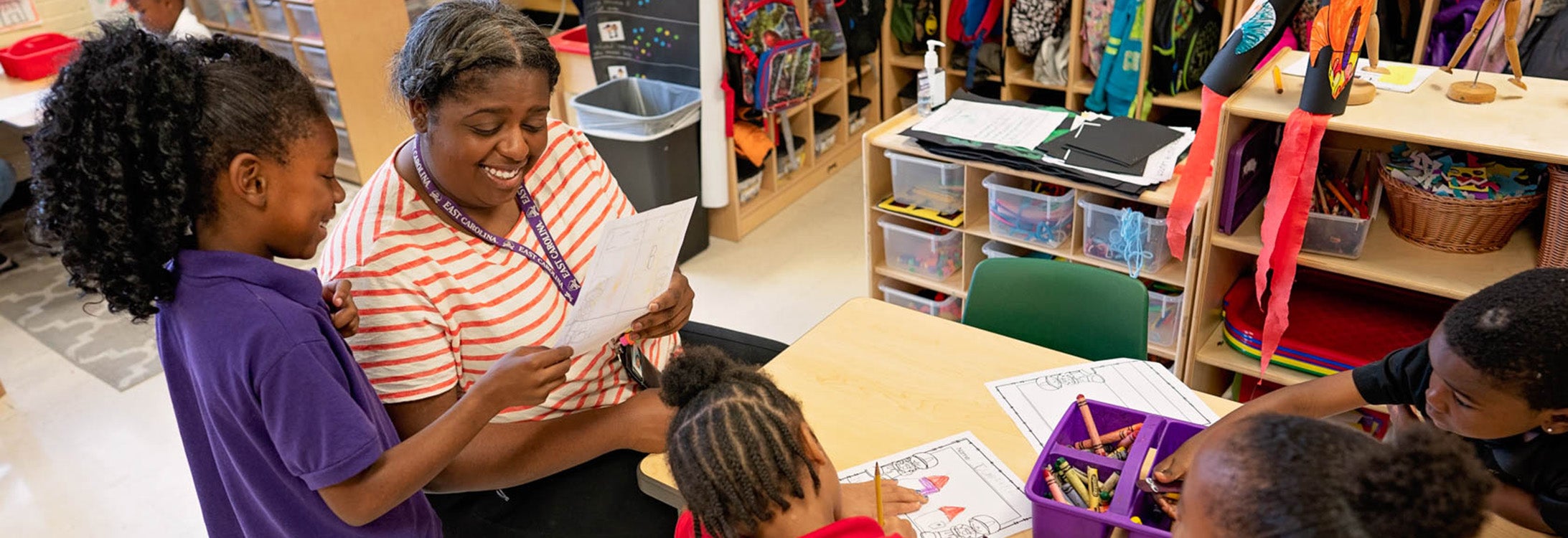BRIDGING THE DIVIDE
Tips for talking to kids about race

Dr. Sheresa Boone Blanchard (ECU Photo)
Today, almost one month following the death of George Floyd in police custody in Minneapolis, Minnesota, protests continue to take place in and around Greenville, throughout the United States and around the world, focused largely on a call for action to address misjustice and mistreatment of Black Americans.
For parents, helping their children make sense of historical and recent events can be a challenge that’s difficult to broach, according to Dr. Sheresa Boone Blanchard, a child development expert in East Carolina University’s College of Health and Human Performance. But as many caregivers are discussing, it can also be an opportunity to set an example and to influence the next generation in positive ways by being more motivated to learn as adults and by having more open discussions with children.
“People are trying to figure out how to take action, continue to grow as people, and figure out how to move forward,” Blanchard said. “There are a lot of different ways … you can have that conversation and talk about how sometimes people do things that hurt other people, whether it’s intentional or not, because of their race.”
Blanchard offers a few basic tips for discussing race with children while reinforcing the values parents want to instill such as fairness, bravery, speaking up, and the importance of respecting and celebrating differences.
Have an honest discussion.
Children often hear about or discuss current events, whether it’s at home or not, so it’s important for parents to provide context and to gauge what their children are hearing and thinking.
What you discuss and how you discuss it depends on their age, Blanchard said. “But we would talk with them about it because they’re going to be talking about it anyway, so it is important that children know our perspectives as caregivers.” What we say and do (as well as what we do not say and do) gives messages to our children about our values.
“One thing that’s difficult about this topic is there are no easy answers about what to do. And that can be fearful for children,” she said. “The way you navigate that is by talking about it, talking about why people might act the way they do, or why they might feel that they’re treated a certain way.” Honesty about race in the United States can be fearful for many adults as well, so providing children with hope and comfort, along with factual information, can give them the power to be actively part of the solution.
READING ABOUT RACE
“Books are sometimes windows, offering views of worlds that may be real or imagined, familiar or strange. These windows are also sliding glass doors, and readers have only to walk through in imagination to become part of whatever world has been created and recreated by the author. When lighting conditions are just right, however, a window can also be a mirror. Literature transforms human experience and reflects it back to us, and in that reflection we can see our own lives and experiences as part of the larger human experience. Reading, then, becomes a means of self-affirmation, and readers often seek their mirrors in books.”
-Dr. Rudine Sims Bishop
Book recommendations for forming a broader perspective:
- “Honey, I Love” – Eloise Greenfield
- “Lailah’s Lunchbox” – Reem Faruqi
- “The Family Book” – Todd Parr
- “Dreamers” – Yuyi Morales
- “All Different Now: Juneteenth, the First Day of Freedom” – Angela Johnson
- “Something Happened in Our Town: A Child’s Story about Racial Injustice” – Marianne Celano, Marietta Collins and Ann Hazzard
Learn along with them.
“No matter what race you are, income level or age, we can always learn more,” Blanchard said.
The history of the civil rights movement, in addition to current events, can be a starting point to facilitate both education and discussion.
“We have a lot of examples across history of ways that people have been separated or treated differently because of race, gender, sexuality, all kinds of differences,” said Blanchard. “Those things may provide a way to broach the subject of racism and why some people may do the things that they do.”
Children’s literature can also help broaden the horizon for children and adults alike.
“As children are growing up, they have books or stories (that provide) ways they can see themselves and see what others might have experienced,” she said. “It helps them to form a broader perspective of themselves and others.”
It’s important to be intentional when choosing literature that reflects a variety of cultural experiences, Blanchard added. “A lot of times it can be kind of easy to stay in your bubble and only have … books that reaffirm who you are.”
Blanchard shared guidance on how families might select books that get them out of their bubble and have potential to create conversation that could expand young minds. Books written for children of all ages portray everyday life for families from a variety of backgrounds and races, like “Honey, I Love” by Eloise Greenfield, “Lailah’s Lunchbox” by Reem Faruqi, “The Family Book” by Todd Parr, or “Dreamers” by Yuyi Morales. Other books may be helpful for discussion about specific events and celebrations, like “All Different Now: Juneteenth, the First Day of Freedom,” or about different perspectives on current events, like “Something Happened in Our Town: A Child’s Story about Racial Injustice” by Marianne Celano, Marietta Collins and Ann Hazzard. The possibilities are endless, and a wide variety of books and authors are available, Blanchard said.
Model the behavior you want to teach.
One of the most important ways to teach acceptance and empathy is to model them.
“Sometimes we act counter to what we say our morals and values are. We may say, ‘I think everyone is equal,’ but then we may do something that’s counter to that,” Blanchard said. “How does that play out in your daily life — in who you socialize with, the schools you choose for your kids or the neighborhood you live in? Those are things that are deep-seated and can be hard to understand.”

Student teacher Akira Hall speaks with kindergartener Alex George at the ECU Community School during the 2018-19 school year. Hall is now a kindergarten teacher at the school, and George has completed the first grade. (Photo by Cliff Hollis)
It’s important to be reflective, to consider our own actions and the kinds of experiences we want our families to have, she said.
“What we’ve learned about implicit bias is that sometimes we aren’t aware that what we say and our actions don’t match,” she said. “Thinking about these topics and about what we do and how there is that mismatch may help us to address that.”
By considering what children learn from the books they read, the behavior they see and the experiences they have, parents can help shape their ideas about what other groups might be going through or what customs and traditions they might value.
“That exposure does help you broaden your perspective and be more empathetic,” Blanchard said. “In order to live a life that affirms the race and culture of all, it is important, even with our youngest humans, to examine our own biases and culture in American society, to consider the ways we are standing for fairness and equity not just for ourselves, but for others, and to actively uplift these attributes as part of our life’s work.”
Dr. Sheresa Boone Blanchard is an assistant professor of human development and family science at East Carolina University in Greenville, North Carolina. Her research interests include early childhood education, parenting and family-centered practices.
Note to editors and reporters: For more information or to speak with Dr. Blanchard, contact ECU News Services at 252-328-6481.
